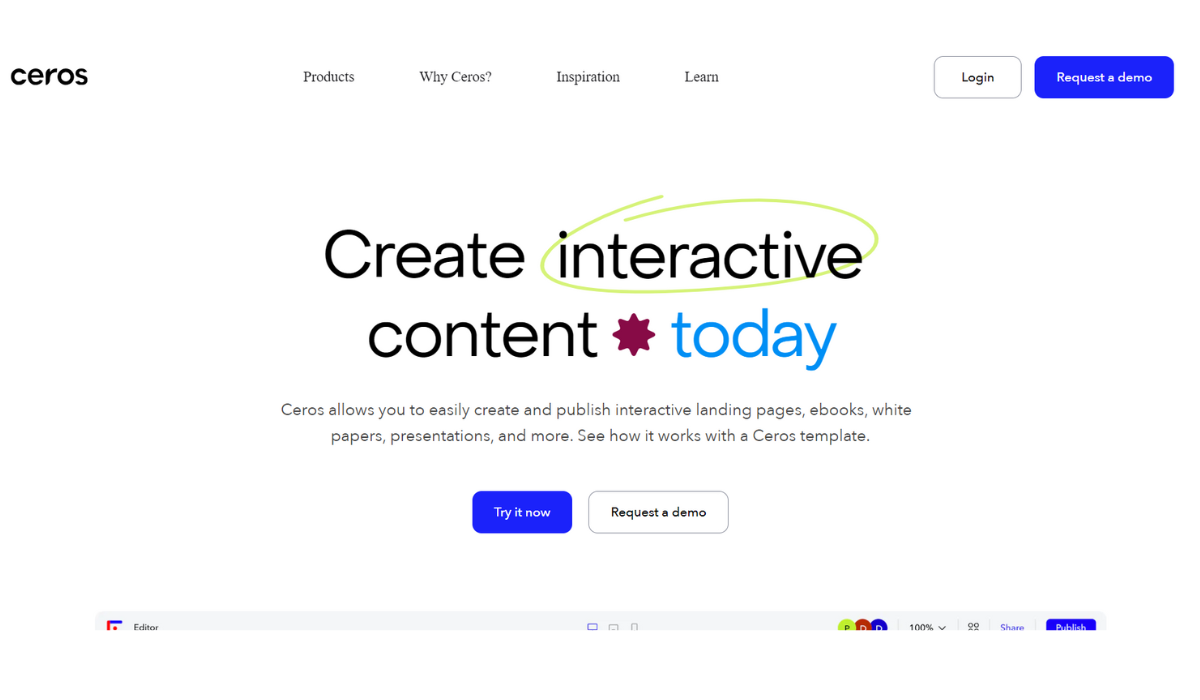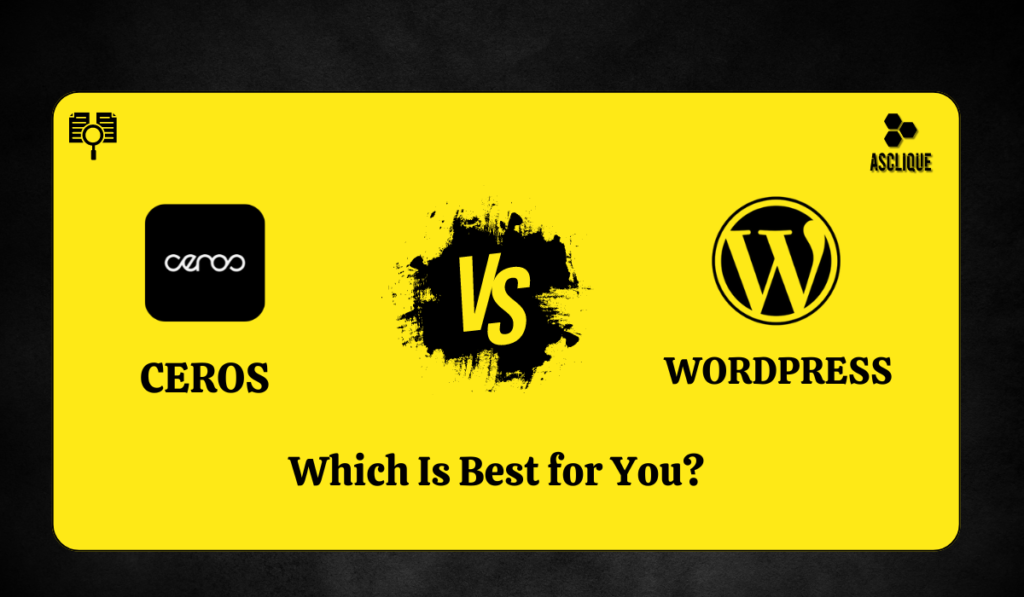Business and marketers usually face a dilemma creating content that is engaging for the audience: go for either Ceros Pages or WordPress? There’s always this option between these two platforms, each with certain features and benefits which can make them suited for different needs. In this post, we’ll break down the similarities and differences – Ceros Pages vs WordPress, discuss their respective strengths and weaknesses, and guide you to the best tool for your next project.
Understanding the Platforms
What is Ceros?

Ceros is one of the cloud-based design platforms that makes it possible for marketers to create interactive content, full of visuals, but do not need deep coding skills. It targets anyone who wants to produce a high degree of digital experiences, including infographics, eBooks, and even interactive landing pages. And since collaboration and real-time teamwork are at the heart of Ceros, having a team work together to produce beautiful and enthralling content cannot be that difficult.
What is WordPress?

WordPress is a rather versatile content management system (CMS) powering more than 40% of all websites on the internet. It is an open-source platform; therefore, anyone can use, modify, and distribute it free of charge. WordPress is one such software that allows flexibility in creating everything from simple blogs to complex e-commerce sites. It has thousands of themes and plugins available to provide endless customization options.
Key Differences: Ceros Pages vs WordPress
Ease of Use
Ceros:
- The platform is well-designed for ease of use, especially for marketers and designers who do not have a technical background. It’s possible to ensure that content gets produced rather quickly without requiring them to write any code; besides, there are also some pre-built templates that make it easy for one to get started on the platform.
WordPress:
- Though user-friendly, WordPress has a steep learning curve compared to Ceros. When using WordPress users often need to know some background about web design and development in order to fully capitalize on its capacities. Once one understands the core, however, the platform becomes really intuitive.
Customization and Flexibility
Ceros:
- Much more geared towards designing great-looking interactive content, Ceros is much less flexible when it comes to overall site functionality. You can customize your projects in Ceros, but it doesn’t have the same kind of flexibility as WordPress would were you building a full site or integrating third-party services such as WordPress does.
WordPress:
- WordPress is phenomenal with regard to personalization and flexibility. With thousands of themes and plugins, it is easily molded to fit specific needs, whether that is adding the capacity of being e-commerce, help in optimization, or connecting to social media sites. Thus, this is the reason why WordPress becomes the favorite choice for business sites of any size.
Interactivity and Engagement
Ceros:
- Ceros will look best if it is used in developing interactive content that is highly engaging. The platform provides users with an opportunity to add animations, quizzes, and other interactive elements in the content; hence, it can be the best option for marketing campaigns intended to capture audience attention. The Content Marketing Institute concludes that interactive content generates 2x as many conversions as passive content.
WordPress:
- Although WordPress can also provide interactive content through its massive add-on plugins, it remains fundamentally a blogging and website content provider. Users can drive engagement through comments, social sharing, and more, though creating truly interactive experiences typically requires far more action than on Ceros.
Price
Ceros:
- The operation of Ceros is on a subscription basis, and their pricing can be pretty steep if using WordPress. Roughly speaking, the plans start at around $3,000 per year, which means it would probably fit larger businesses or dedicated budget content marketing.
WordPress:
- Whereas WordPress itself is free, it can lead to extra costs in hosting, premium themes and plugins. Basic hosting can range from $3 to $10 per month, thus coming fairly cheap, especially for small businesses or start-ups.
Analytics and Performance Tracking
Ceros:
- Ceros boasts solid analytics capabilities, which make it easy to track the performance of the interactive content users develop. You can easily track engagement metrics and follow the conversion rates but do so in terms of user interactions; you can use these metrics to fine-tune marketing strategies over time.
WordPress:
- Just like Ceros, WordPress also has analytics options, but users rely more often than not on third-party plugins such as Google Analytics for a better understanding of the big picture. Even though it pretty much serves them well in extended tracking capacities, sometimes it does require some more setup and technical know-how.
Use Case for Every Platform
When to Use Ceros
- Interactive Marketing Campaigns: this is the type of service if you aim to design an interactive content that will attract attention as well as leads. The creating of content would take a little time because of its user-friendly interface.
- Visual Storytelling: using Ceros is perfect for brands who want to tell their story through images. If your content depends on images, infographics, or animation, this service can make those ideas come into being.
When to Use WordPress
- Full Sites: WordPress is much more suitable for sites that call for a fully-fledged web site with different functionalities. From e-commerce to blogs, it can really do it all.
- Content Management: WordPress has strong content management and makes it easy to manage big volumes of content, which helps organizations regularly publish blogs or articles.
- Flexibility in SEO and marketing: Its versatility in terms of available plugins makes WordPress adaptable for easy SEO optimization, which sends organic traffic to a site.
Statistics That Matter
Market Share: WordPress runs more than 40% of websites worldwide-proving that it is the most used and dependable.
Engagement: HubSpot reveals that content with interaction has a change of being engaged 70% more than the one with no interaction.
Growth in Content Marketing: Content Marketing Institute reveals that 70% of marketers have an active approach to content marketing. The choice between the two platforms becomes even more vital.
Also Read: Top 7 Best Website Builders for SEO in 2024
Conclusion
In the debate of Ceros Pages vs WordPress, it all really just boils down to your needs; whether you are a content-focused provider who wants to create creative, interactive content or whether you’re looking for a comprehensive platform with versatility and flexibility to accommodate various types of content and functionality, WordPress would likely be the better bet. This way, knowing what your goals and resources are would help you to make a final decision to choose a good platform that would meet your content needs.
FAQs
Which platform is better for SEO, Ceros or WordPress?
WordPress is generally better for SEO due to its vast array of plugins and customizable features that can enhance search visibility.
Can I create interactive content with WordPress?
Yes, while WordPress is primarily a CMS, you can create interactive content using plugins, although it may require more effort than Ceros.
Is Ceros suitable for small businesses?
Ceros is better suited for larger businesses with dedicated budgets for marketing content, while WordPress offers a more affordable option for small businesses.
How do pricing structures compare between Ceros and WordPress?
Ceros operates on a subscription model starting around $3,000 per year, while WordPress is free, with additional costs for hosting, themes, and plugins.

